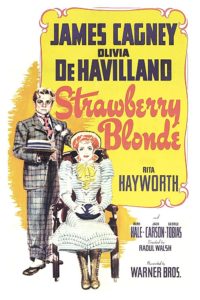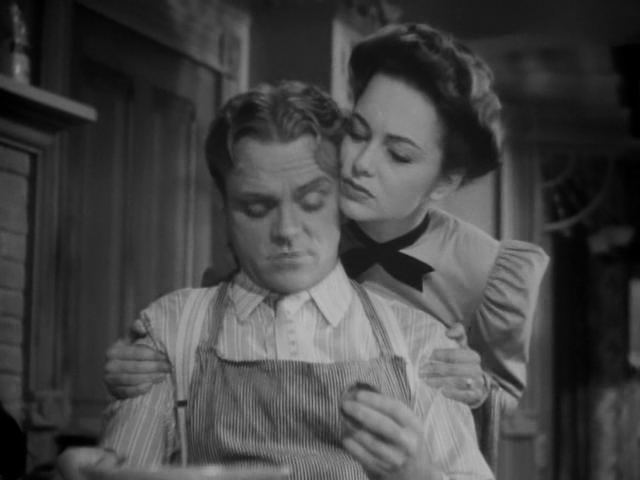Strawberry Blonde, The (1941)
“I’d have quit long ago if that horse didn’t have such interesting teeth.”
|
Synopsis: |
|
Genres, Themes, Actors, and Directors:
Review: Since we know Cagney didn’t end up with Hayworth, the story of how and why his romantic intent failed — as well as the story behind his recent past as a “jailbird” — inform the twist-filled narrative, in which most people aren’t quite what they seem (some for the worse, some for the better). While she’s not the title character, Olivia de Havilland stands out as the most memorable and sassy female in the film, and is given numerous fun lines; she’s nicely filmed by James Wong Howe, who offers stand-out cinematography as usual. Cagney’s character is a bit of an enigma — given his lifelong dreams of dentistry, would he really accept a random job from Carson without hesitation? — but at least we see him evolving, and the overall moral of the story is a satisfying one. Redeeming Qualities and Moments: Must See? Links: |





One thought on “Strawberry Blonde, The (1941)”
A once-must – actually, for reasons brought out in the assessment.
What’s most interesting about ‘TSB’ is how progressively layered it becomes. One might think from its title – and, indeed, through the first half of the viewing – that the film is little more than fluff.
But it cleverly sneaks up on you as a rather potent exploration of the propriety of the period it depicts. It accomplishes this on several levels – and those levels allow for an absorbing arc for each of the four main characters.
~all of which is laid out rather masterfully by director Walsh and delivered by the main quartet of actors with wonderful dexterity. Of course, thanks must also then go to the terrific script by Julius J. and Philip G. Epstein (adapted from James Hagan’s play).